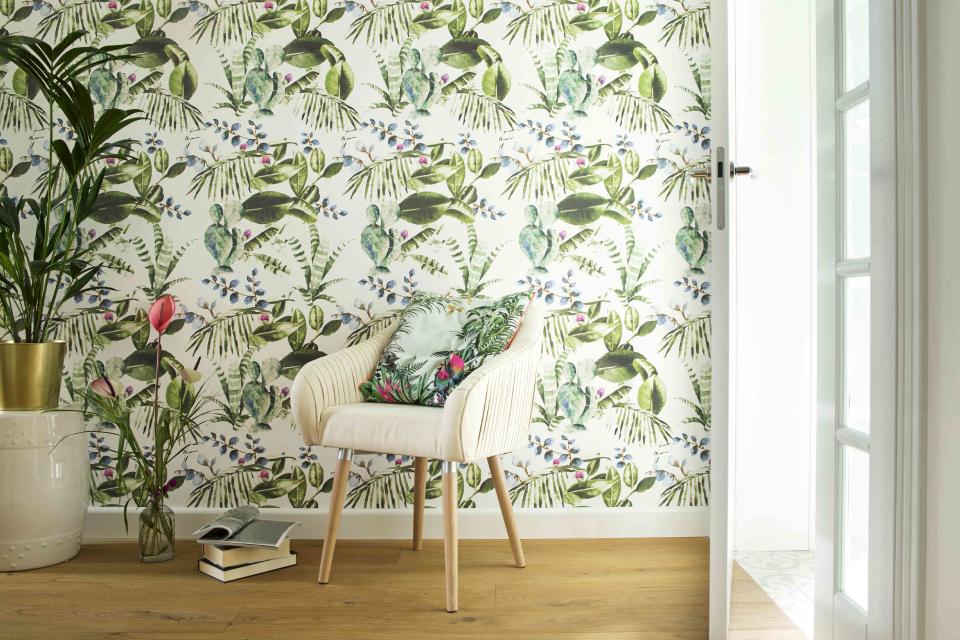How to Choose Between Conventional vs. Peel-and-Stick Wallpaper
Ask yourself these questions before starting your next wallpaper project.

FollowTheFlow/Getty Images
Wallpaper has made a major comeback in recent years. There’s a good reason for this. It instantly adds color, texture, and style to a home. One of the biggest innovations in this category is peel-and-stick wallpaper, which is sometimes called temporary or removable wallpaper. While it has some advantages over conventional wallpaper—it can be self-installed and it's generally less expensive—it may or may not be the right choice for every room.
Here are five questions to ask yourself when choosing between wallpaper types.
Related: The 10 Best Wallpapers of 2023, Tested and Reviewed
How Long Will You Be In Your Home For?
One of the most important questions you can ask yourself before choosing between peel and sick and conventional wallpaper is how long you plan on keeping the wallpaper up. Interior designer Maggie Winshall of MW Interiors tells me, “Peel and stick is more of a temporary solution.”
So, if you’re planning on being someplace short term—opt for peel and stick. “If you're a renter, always use peel and stick," says Molly Borman Heymont, founder of wallpaper and decor brand, Housewife Essentials. "And of course, if you change your mind frequently, peel and stick makes it easy to just swap it out when you're ready. I love peel and stick for this reason."
On the other hand, if you own your home and know you’ll be there for the foreseeable future, opting for conventional wallpaper is a reasonable choice.
What Room Will It Be Installed In?
Peel-and-stick wallpaper is ideal for certain spaces that will be due for a change in the near future, such as children’s rooms. After all, while a toddler might enjoy an animated character or animal print—they might not appreciate it as much as a Kindergartener. So, in cases like this, conventional wallpaper is not worth the extra cost or expense.
Peel and stick wallpaper is also a wise choice for anyone who often changes their mind or likes to refresh their space every few years.
What’s The Budget?
Conventional wallpaper can be very expensive. Then, add the cost of supplies and professional installation—and it can really blow your budget. Peel-and-stick wallpaper can be DIY'd and installed as a weekend project. Keep in mind, you’ll want to have a few supplies on hand, such as a measuring tape and a quality paper cutter—but these things aren’t too pricey.
How Humid Is The Room?
One of the biggest problems with peel-and-stick wallpaper is that it won’t stick to the walls as well as conventional wallpapers, especially in rooms with lots of moisture exposure. So, peel and stick isn't the best choice for spaces such as bathrooms and basements. However, this type of wallpaper is great for powder rooms.
Your choice can also depend on the local climate. If it’s generally humid where you live, you may not want to install peel-and-stick paper in places where you often keep a window open, such as a home office or rooms that open to the outside, like a mudroom.
What Type Of Wall Do You Have?
While conventional wallpaper can work on most types of walls, the same can’t be said for peel-and-stick papers, explains Winshall. “You need a smooth surface with little texture or bumps.”
The same rule applies to walls with an “orange peel” texture. “Even though some brands say you can [apply peel-and-stick here]—it will never look the way you want it to,” Heymont says.
Peel and stick papers also don't stick to textured walls as well as conventional paper can. So while it may look fine after installation—it may begin to fall shortly thereafter.
For more Real Simple news, make sure to sign up for our newsletter!
Read the original article on Real Simple.

